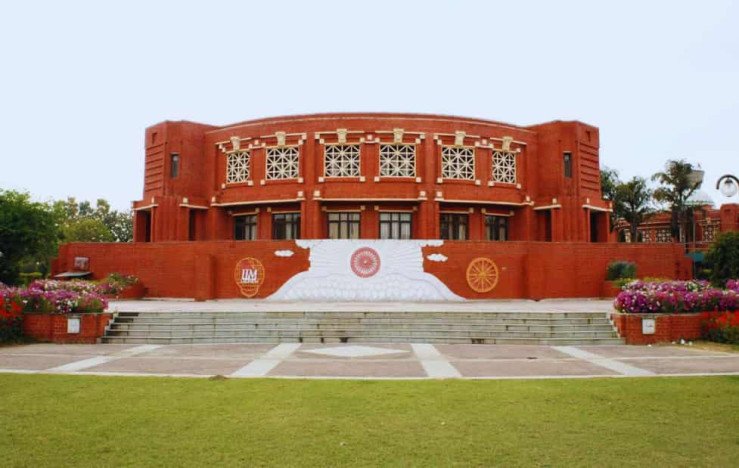Last Updated Oct - 31 - 2023, 08:13 PM | Source : HT | Visitors : 102
Researchers at IISER Bhopal create a transparent biodegradable adhesive for tissue repair, with applications in medicine and sustainable packaging.

Researchers at the Indian Institute of Science Education and Research Bhopal (IISER Bhopal) have created an adhesive synthetic that is clear and can be used to seal and heal damaged or dissected tissues. According to a press release by IISER Bhopal, this adhesive, which is biodegradable and biocompatible, is capable of binding different surfaces such as tissues, bones, eggshells, and wood in both air and underwater and requires no additional crosslinking agents or metal ions.
READ MORE| AICTE Organizes Second Edition of Inventors Challenge for Semiconductor Innovation
Biodegradable and biocompatible adhesives like these are used in dentistry, medicine, tissue engineering, and medication delivery. These can also be used in place of wires, staples, and sutures for wound closure in orthopaedic treatments to improve bone recovery. According to IISER Bhopal, they could also be utilized in environmentally friendly packaging applications and goods, supporting sustainable business practices across a range of industries.
Dr. Aashish Sharma, an associate professor in the school of medical and allied sciences at G D Goenka University in Haryana, Prof. Aasheesh Srivastava, faculty in the department of chemistry at IISER Bhopal, and Dr. Tanmay Dutta, a postdoctoral researcher at IISER Bhopal, oversaw the research. The press release stated that their findings were published in the journal Chemistry - A European Journal.
“Biomedical adhesives are bonding and sealing materials that provide support and cohesion to repair tissues and are extensively used in medicine. Suitable materials for these adhesives can be found in nature and are commonly secreted by underwater organisms such as sandcastle worms and mussels," said Prof Aasheesh Srivastava, Faculty, Department of Chemistry, IISER Bhopal.
To test their binding capabilities, three different formulations were developed and applied directly to various pressed substrates to achieve adherence. One of them which the authors called ‘A30’ had excellent adhesive action and could bind a variety of substrates such as mammalian bones, wood, glass, mica, and aluminum. The researchers at IISER Bhopal also add that adhesive A30 had a porosity of 40% which can help a great deal in tissue regeneration by allowing cell movement through the adhesive layer. This way weight or pressure across the adhered joint is distributed across the tissue surface which can lead to quicker healing.
“Our A30 adhesive could even bind bones while fully submerged under water, and after curing the adhered bone pieces could bear large weights while remaining bonded. Our adhesive provides a maximum adhesion strength of about 7 kg/cm2. This makes it a promising glue for bone restoration and fracture repair,” said Dr Tanmay Dutta, Postdoctoral Researcher - IISER Bhopal.
Even with bones completely submerged in water, our A30 adhesive was able to hold together and allow the adhering bone fragments to support heavy weights until they hardened. A maximum adhesion strength of roughly 7 kg/cm2 is offered by our adhesive. This makes it a viable adhesive for fracture repair and bone replacement, according to Dr. Tanmay Dutta, IISER Bhopal postdoctoral researcher.
Biological and cosmetic applications will make use of the adhesive compositions created by the IISER team. According to the press release, the researchers are trying to optimize these adhesives for such practical uses.
Biomimetic adhesives have been developed and applied as adhesives in the past. However, they came with their shortcomings. For example, biomimetic adhesives that have been made from natural polymers such as fibrin, collagen, gelatin, and chitosan, have a risk of triggering immunological reactions, and may not always be useful in cosmetics and surface tissue adhesion applications. Furthermore, these adhesives are not transparent and can have different colours, which may affect the aesthetic value. Hence, there is a need to develop biocompatible, transparent adhesive systems that are also cost-effective, said IISER Bhopal.
“We used a mixture of oppositely-charged water-soluble polyelectrolytes that are known for their biodegradability and biocompatibility. These polymers have multiple amide groups and thiol residues that lead to strong adhesion due to the formation of hydrogen bonds and disulfide bonds. The resulting adhesive layer is colorless and transparent," said Prof Aasheesh Srivastava.
READ MORE| University of Delhi Establishes Joint Control Rooms for Anti-Ragging Measures

Jan - 20
The Indian Institute of Management Lucknow has launched a specialised Venture Capital and Private Equity programme aimed at professionals looking t... Read More

Jan - 20
The Indian Institute of Technology Delhi has announced an Advanced Professional Certificate Programme in Financial Technology to help professionals... Read More

Jan - 17
India’s Union Education Minister Dharmendra Pradhan has presented a strong vision to enhance the quality and global reputation of India&rsquo... Read More